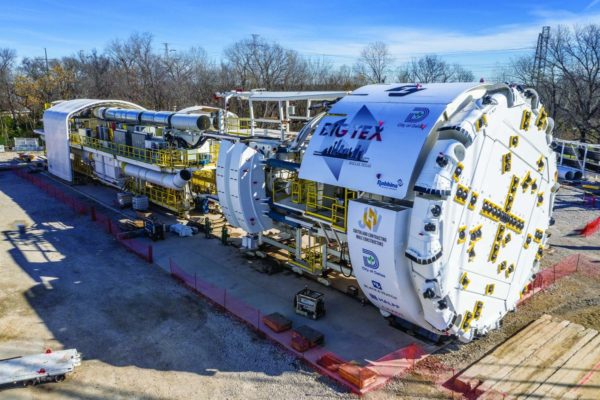Largest hard rock TBM in the U.S. to dig tunnel designed to provide 100-year flood protection

Designed to provide 100-year flood protection for east and southeast Dallas, the 11.6 m diameter Robbins Main Beam tunnel boring machine will excavate the 8 km Mill Creek Drainage Relief tunnel. The largest hard rock TBM ever to bore in the U.S, the machine will change size partway through the bore, to a more compact 9.9 m.
The unique Robbins TBM will be used to dig tunnel areas affected in recent years by severe storms. The tunnel will protect 2,200 commercial and residential properties, including Baylor Medical Center. The current drainage system in these areas was constructed 50 to 70 years ago, and only provides two to five years of flood protection.
The dual-diameter aspect of the Robbins TBM will be a first-of-its-kind conversion process. The contractor, Southland/Mole Joint Venture (SMJV), will make the conversion underground about 2.8 km into the bore. The two diameters are needed as the upstream section of the tunnel is designed with a circular cross-section and peak flow rate of 42 m3/sec, while the downstream 2.8 km portion has a higher peak flow of 565 m3/sec and was initially designed as a horseshoe cross-section. Using the TBM for the entire tunnel is less time consuming and costly.
The Robbins TBM, named “Big Tex” with permission of the State Fair of Texas, has been designed with a specialized cutter head including removable spacers and adjustable bucket lips to convert to a smaller diameter. The TBM will first complete its 11.6 m diameter section of the alignment, then back up about 21 m to a transition area for the conversion, which is expected to take six to eight weeks.
Based on previous work through similar geology, the project team expects TBM excavation to progress rapidly to an average of 25m (80 ft) per day, allowing the project to be completed on schedule in 2023.


